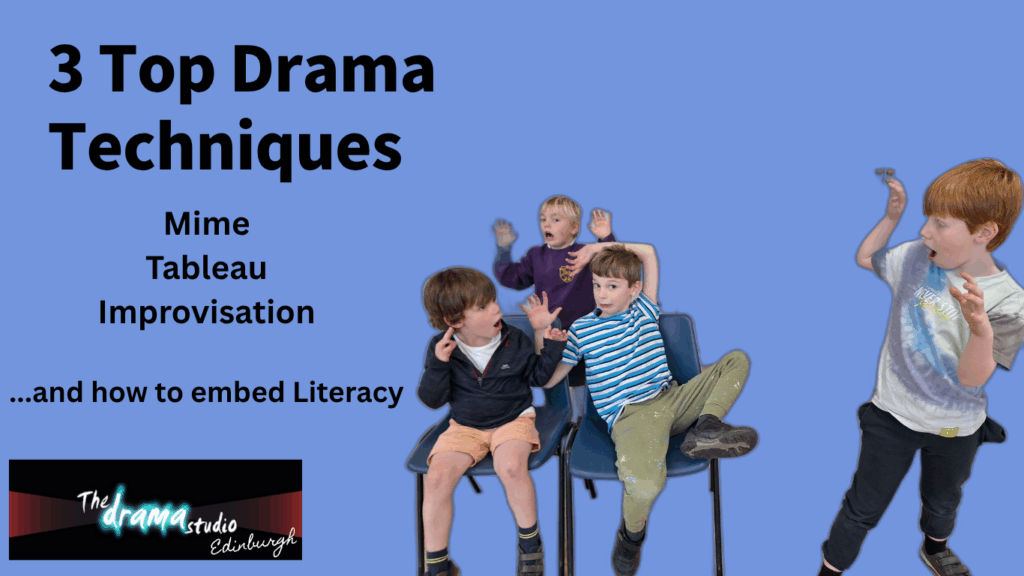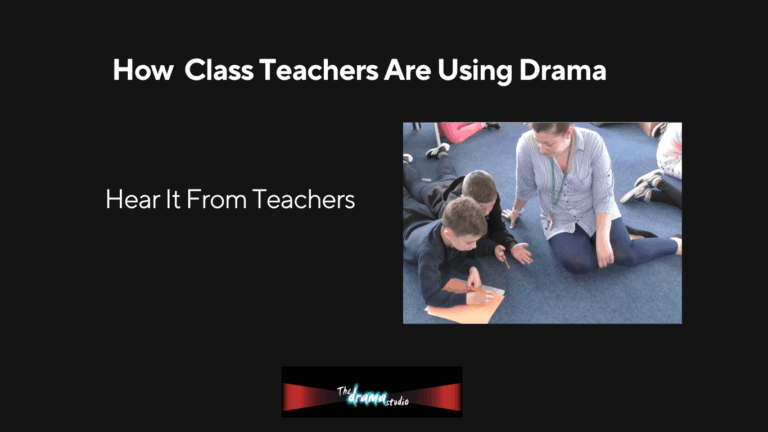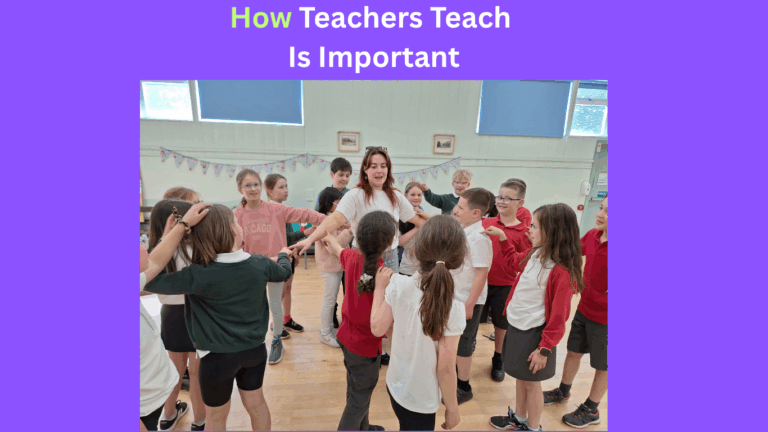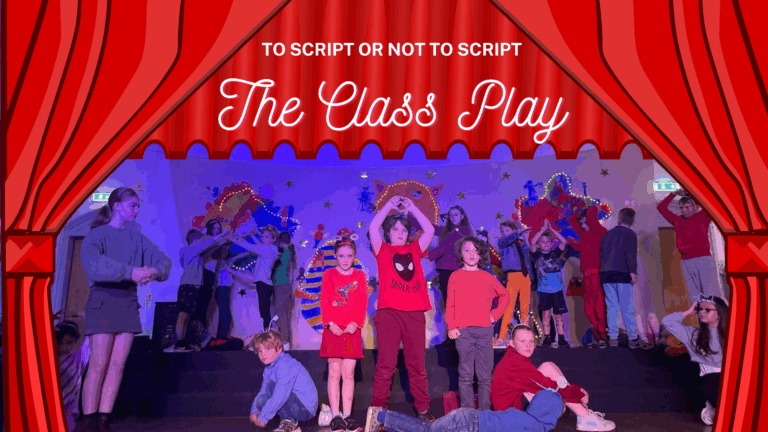There are three very useful Drama techniques/conventions that we use a lot which are easy to organise in your classroom using practically any topic. Below are brief examples of how you can take your lesson content and drop it into interactive Drama activities that will have your students asking for more learning like this.
Mime and Movement
Mime and Movement is our primary means of communication using our bodies as the means of interaction, without objects and speech. It can be done with others or alone and is a very powerful means of expressing and communicating emotion – very often a single gesture/expression/movement can say so much more than words ever can. Giving students a release from speech can be very empowering for them and teachers observing often learn a lot about their students that they might otherwise have missed. Mime and Movement is accessible to most students, giving a silent voice to their emotions. Mime and Movement is also an excellent focusing activity.
How Can We Use Mime and Movement?
The removal of speech can be liberating for so many children who struggle with confidence. Many of our lessons start with Mime and Movement games and activities.
No matter what the topic a Mime and Movement activity is always possible:
Students can become groups of people from stories, doing jobs, enjoying celebrations through Mime and Movement. Activities will be greatly enhanced by the use of good, appropriate background music.
Stories and sketches can be presented using Mime and Movement only and then developed into spoken scenes.
Students can become objects using Mime and Movement – a clock ticking, machine working, a car moving.
Into Literacy – From Mime and Movement scenes students will be able to express the elements in a pencil to paper activity.
They can draw and write about characters they enacted, storylines that emerged from their mimes, thoughts and feelings they had.
Literacy can then be shared, presented, discussed, adding value to the students’ efforts as individuals and promoting confidence in what they can achieve – and commitment to class work is established.
Tableau
A tableau is a still image which can include the whole class or just a group. Tableau is ideal for observation and interpretation of what the students think they are seeing within the tableau and makes for great discussion around that.
How Can We Use Tableau ?
In groups, students “freeze” in a pose that represents a scene from a drama lesson, a text or a class novel. Other students might guess which part of the story it represents and point out the details.
Tableau can be used to build stories – students work on ideas for scenes, creating a storyline and then choose 3 scenes – beginning, middle, end to show as tableaux. This can help with the construction of a story.
With older students, the first tableau might be the end of the story and the next two are flashbacks.
Teachers could give the students the end tableau and they work out the flashback scenes and show to the others.
Tableaux can be used to order/represent lots of things such as events and historical timelines, natural occurrences, newspaper headlines etc
Students can create tableaux of physical objects in scenes – the old junkyard, the fairground, the air raid shelter, the pirate ship – they can do this in groups, each person becoming a part of the object within a still picture.
Into Literacy – Students can add captions to drawings and artwork based on their tableaux. They talk about these with their classmates and teachers or present them to the class.
Students now have a structure from the tableau work that they can write stories from. Again these can be shared, adding value – and investment in class work.
Improvisation
Improvisation is speaking and acting spontaneously without scripts or previous rehearsal. Students will create characters within scenes and engage with each other “in role” as they go along, creating new content on their feet.
It is an excellent way to create and explore new, original content and is a fun and exciting way to work in Drama.
Improvisation instantly grabs attention and quickly pulls the students into the lessons. It sharpens wits and builds rapport and greatly enhances listening and responding.
Improvisation is key to the way we work with our students both in schools and in our independent classes. Being able to express themselves freely through drama, building their own characters and storylines, is highly motivating for students. It is the most quoted reason for attending our classes rather than something overly structured and heavily directed.
When teachers start teaching through improvisation in their class everything changes from relationships to attitude to attainment.
We love observing children watching each other’s scenes as they are played out before them, connecting and empathising with the characters that they can identify from real life scenarios.
Teachers have this fantastic tool of engagement at their disposal. Although many still shy away from using it we are finding more and more are taking the plunge and trying it and finding their confidence on seeing the instant results of doing so.
How Can We Use Improvisation?
After initial discussion, students can create scenes connected to class topics or to skills you might be focusing on.
Most teachers begin by simply briefing the students on how to set up their scenes and characters and then organise them in groups to begin their improvisations.
Once teachers become more confident they are ready to try teacher in role technique which completely transforms their teaching practice, relationships with their students, modifies students behaviour and drives attainment.
We have extensive resources which outline this process.
Into Literacy – Having taken part in improvised scenes, the students now have content to bring to their Literacy tasks and will no longer struggle to put pencil to paper, expressing themselves through drawings, words, cartoons, captioned pictures, speech bubbles, stories, diaries, reports, character sketches etc
Again these can be shared, adding value – and raising attainment.
Have a go trying out a few of these simple techniques which your students will love. Once you have them on side and in the moment they will have no problem in adding on those Literacy tasks that previously have caused some of them so many issues.
Julie and Louise
PS You can trial Over To You anytime to see and engage with the process in action.




